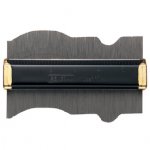Alan Bienlein
Member
- Messages
- 2,045
For me it's the dresser for the bedroom suite I'm building. I have the two outer pieces of the dresser 90% complete but had to stop to take care of paying jobs and lifes other assorted curve balls that get thrown at you. Good news is I got the tops assembled and a coat of oil on them along with the caps for the legs only to be put on hold for another paying job.
Almost forgot about the flooring for our living room/ hallway. It's all hand scraped, sanded, stained and finished. Just need the time to get it installed and my helper ( Norma) to heal up from the car accident.
Almost forgot about the flooring for our living room/ hallway. It's all hand scraped, sanded, stained and finished. Just need the time to get it installed and my helper ( Norma) to heal up from the car accident.



